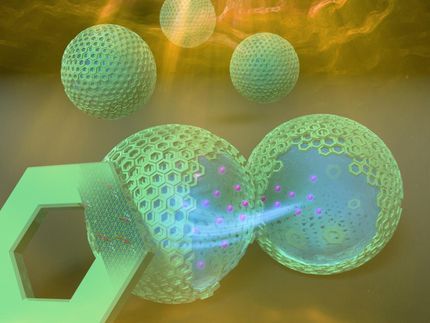Watching molecules grow into microtubes
Advertisement
A team of researchers at Washington University in St. Louis, headed by Srikanth Singamaneni, PhD, assistant professor of mechanical engineering & materials science, unexpectedly found the mechanism by which tiny single molecules spontaneously grow into centimeter-long microtubes by leaving a dish for a different experiment in the refrigerator.
Once Singamaneni and his research team, including Abdennour Abbas, PhD, a former postdoctoral researcher at Washington University, Andrew Brimer, a senior undergraduate majoring in mechanical engineering, and Limei Tian, a fourth-year graduate student, saw that these molecules had become microtubes, they set out to find out how. To do so, they spent about six months investigating the process at various length scales (nano to micro) using various microscopy and spectroscopy techniques. The results were published in the journal Small.
"What we showed was that we can actually watch the self-assembly of small molecules across multiple length scales, and for the first time, stitched these length scales to show the complete picture," Singamaneni says. "This hierarchical self-organization of molecular building blocks is unprecedented since it is initiated from a single molecular crystal and is driven by vesiclular dynamics in water."
Self-assembly, a process in which a disordered collection of components arrange themselves into an ordered structure, is of growing interest as a new paradigm in creating micro- and nanoscale structures and functional systems and subsystems. This novel approach of making nano- and microstructures and devices is expected to have numerous applications in electronics, optics and biomedical applications.
The team used small molecules p-aminothiophenol (p-ATP) or p-aminophenyl disulfide added to water with a small amount of ethanol. The molecules first assembled into nanovesicles then into microvesicles and eventually into centimeter-long microtubules. The vesicles stick onto the surface of the tube, walk along the surface and attach themselves, causing the tube to grow longer and wider. The entire process takes mere seconds, with the growth rate of 20 microns per second.
"While it was exciting to watch the self-assembly of these molecules, we are even more excited about the implications of the self-assembly of such small molecules," Singamaneni says. "This mechanism can be used to load the vesicles with the desired macromolecules, such as proteins, antibodies or antibiotics, for example, and build microtubes with a biological function."
Singamaneni says his research team collaborated with researchers in Singapore who are experts in molecular crystals, as well as with colleagues in the Department of Chemistry.
"We hope that once we can co-assemble some functional nanostructures along with these small molecules, then these molecular assemblies can have applications in biological sensors and chemical sensors," Singamaneni says.
Original publication
Abbas A, Brimer A, Tian L, d'Avignon D, Hameed A, Vittal J, Singamaneni S.; "Vesicle-Mediated Growth of Tubular Branches and Centimeter-Long Microtubes from a Single Molecule." Small.
Other news from the department science
Most read news
More news from our other portals
See the theme worlds for related content
Topic World Spectroscopy
Investigation with spectroscopy gives us unique insights into the composition and structure of materials. From UV-Vis spectroscopy to infrared and Raman spectroscopy to fluorescence and atomic absorption spectroscopy, spectroscopy offers us a wide range of analytical techniques to precisely characterize substances. Immerse yourself in the fascinating world of spectroscopy!

Topic World Spectroscopy
Investigation with spectroscopy gives us unique insights into the composition and structure of materials. From UV-Vis spectroscopy to infrared and Raman spectroscopy to fluorescence and atomic absorption spectroscopy, spectroscopy offers us a wide range of analytical techniques to precisely characterize substances. Immerse yourself in the fascinating world of spectroscopy!
























































